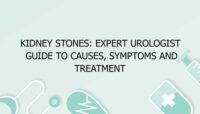An echocardiogram, commonly known as an echo, is a diagnostic imaging test that uses ultrasound technology to create detailed images of the heart. This non-invasive procedure allows healthcare providers to evaluate the heart’s structure and function in real-time, offering valuable insights into various cardiovascular conditions. By utilizing sound waves to generate images, an echocardiogram provides a comprehensive view of the heart’s chambers, valves, and blood flow, assisting in the diagnosis, treatment, and monitoring of heart diseases.
Purpose of the Echocardiogram Test
The echocardiogram serves several important purposes in the assessment and management of heart conditions:
- Assessing Heart Structure and Function: The primary purpose of an echocardiogram is to evaluate the size, shape, and function of the heart’s chambers and valves. It helps to identify structural abnormalities, such as congenital heart defects, valve disorders, and heart muscle conditions. By visualizing the heart’s anatomy and movement, the test provides crucial information about how well the heart is pumping blood and whether there are any obstructions or leaks.
- Diagnosing Heart Diseases: Echocardiograms are instrumental in diagnosing various heart diseases, including heart failure, cardiomyopathy, and valvular heart disease. The test helps to detect issues such as abnormal heart valve function, thickening or enlargement of the heart muscle, and impaired blood flow.
- Evaluating Symptoms: If a patient presents with symptoms such as chest pain, shortness of breath, or unexplained fatigue, an echocardiogram can help determine if these symptoms are related to a heart condition. The test can identify potential causes of these symptoms and guide further diagnostic and therapeutic actions.
- Guiding Treatment Decisions: For individuals with known heart conditions, echocardiography helps in monitoring disease progression and evaluating the effectiveness of treatment. It assists in making decisions about medical therapies, surgical interventions, and other management strategies.
- Preoperative and Postoperative Assessment: Before and after heart surgery, an echocardiogram can be used to assess the heart’s condition and ensure that the procedure was successful. It provides information on how well the heart is healing and whether any further intervention is needed.
Understanding Echocardiogram Results
Echocardiogram results are interpreted based on the detailed images and measurements obtained during the test. Key aspects of the heart that are evaluated include:
- Heart Chambers: The echocardiogram provides images of the four heart chambers (right and left atria, right and left ventricles). Measurements of chamber size and wall thickness help to assess heart function and detect conditions such as cardiomyopathy or atrial enlargement.
- Heart Valves: The test evaluates the structure and function of the heart valves (mitral, tricuspid, aortic, and pulmonary). It helps to identify issues such as valve stenosis (narrowing) or regurgitation (leakage) and assesses how well the valves are opening and closing.
- Blood Flow: Doppler echocardiography is used to measure blood flow through the heart and its valves. It helps to assess the direction and velocity of blood flow, detect abnormal flow patterns, and evaluate the presence of blood clots or turbulence.
- Ejection Fraction: The ejection fraction (EF) is a measurement of the percentage of blood pumped out of the left ventricle with each heartbeat. A normal EF indicates that the heart is pumping effectively, while a reduced EF may suggest heart failure or other cardiac conditions.
- Wall Motion: The test evaluates the movement of the heart walls during contraction and relaxation. Abnormal wall motion can indicate areas of reduced blood supply or damage to the heart muscle.
Normal Range of Echocardiogram Findings
The normal range for echocardiogram findings provides benchmarks for interpreting test results. Here is a table summarizing key normal values and their significance:
| Parameter | Normal Range | Description |
|---|---|---|
| Left Ventricular Ejection Fraction (EF) | 55% – 70% | Percentage of blood pumped out of the left ventricle with each heartbeat. |
| Left Atrial Diameter | 2.0 – 4.0 cm | Measurement of the left atrium’s size. |
| Mitral Valve Area | 4.0 – 6.0 cm² | Size of the mitral valve orifice. |
| Aortic Root Diameter | 2.0 – 3.7 cm | Measurement of the aortic root’s diameter. |
| Right Ventricular Function | Normal or mildly reduced | Assessment of right ventricular pumping ability. |
| Tricuspid Regurgitation Velocity | < 2.8 m/s | Speed of blood flow through the tricuspid valve. |
| Septal Wall Thickness | 0.6 – 1.1 cm | Thickness of the interventricular septum. |
These values offer general guidelines for evaluating heart function and structure. Variations from these ranges may indicate potential cardiac issues and should be discussed with a healthcare provider for a comprehensive understanding of their significance.
Frequently Asked Questions (FAQs) about Echocardiogram Testing
What is an echocardiogram, and how does it work?
An echocardiogram is a diagnostic imaging test that uses ultrasound technology to create detailed images of the heart’s structures and functions. During the test, a small handheld device called a transducer is placed on the chest, and it emits high-frequency sound waves that bounce off the heart and return to the transducer. These sound waves are converted into real-time images displayed on a monitor, allowing healthcare providers to visualize the heart’s chambers, valves, and blood flow. The test is non-invasive and does not involve radiation, making it a safe and effective method for assessing heart health and diagnosing various cardiovascular conditions.
What are the main types of echocardiograms?
There are several types of echocardiograms, each designed to provide specific information about the heart’s condition:
- Transthoracic Echocardiogram (TTE): The most common type, performed by placing the transducer on the chest wall. It provides comprehensive images of the heart’s structures and is used for routine evaluations.
- Transesophageal Echocardiogram (TEE): Involves inserting a flexible tube with a transducer into the esophagus to obtain detailed images of the heart from a closer angle. It is used when clearer images are needed or when other tests are inconclusive.
- Stress Echocardiogram: Combines echocardiography with a stress test (such as exercise or medication-induced stress) to evaluate how the heart performs under physical stress. It helps to detect issues that may not be evident at rest.
- Doppler Echocardiogram: Uses Doppler technology to assess blood flow through the heart’s chambers and valves, providing information on the direction and speed of blood flow and detecting abnormalities such as regurgitation or blockages.
How should I prepare for an echocardiogram?
Preparation for an echocardiogram is generally minimal. For a transthoracic echocardiogram (TTE), you may be asked to remove clothing from the upper body and lie on an examination table. It is advisable to avoid eating a large meal immediately before the test, as a full stomach may affect the quality of the images. For a transesophageal echocardiogram (TEE), you may need to fast for several hours before the procedure, and you will be given instructions on how to prepare. Your healthcare provider will provide specific guidelines based on the type of echocardiogram you are scheduled to undergo. Following these instructions will help ensure that the test is performed effectively and the results are accurate.
What can an echocardiogram detect?
An echocardiogram can detect a wide range of heart conditions and abnormalities, including:
- Structural Abnormalities: Issues such as congenital heart defects, valve disorders, and abnormalities in the heart chambers or walls.
- Heart Valve Disorders: Problems such as stenosis (narrowing) or regurgitation (leakage) of the heart valves.
- Cardiomyopathy: Conditions affecting the heart muscle, such as hypertrophic cardiomyopathy or dilated cardiomyopathy.
- Heart Failure: Assessing the heart’s pumping efficiency and identifying signs of heart failure.
- Blood Clots: Detecting the presence of blood clots within the heart chambers.
- Pericardial Effusion: Identifying fluid accumulation around the heart.
By providing detailed images and measurements, an echocardiogram helps in diagnosing these conditions and guiding appropriate treatment.
How long does an echocardiogram take?
The duration of an echocardiogram varies depending on the type of test and the complexity of the evaluation. A standard transthoracic echocardiogram (TTE) typically takes about 30 to 60 minutes to complete. A transesophageal echocardiogram (TEE) may take longer, usually around 1 to 2 hours, due to the preparation and sedation required. Stress echocardiograms, which combine exercise with imaging, may take additional time for the stress phase. The overall time may also include preparation and post-test observations. Your healthcare provider will provide an estimate based on the specific type of echocardiogram being performed.
Are there any risks associated with an echocardiogram?
Echocardiograms are generally considered safe and carry minimal risks. The procedure is non-invasive and does not involve radiation, making it a low-risk diagnostic test. For transesophageal echocardiograms (TEE), there are some risks associated with the insertion of the endoscope, such
as throat discomfort, minor bleeding, or injury to the esophagus. However, these risks are rare and are managed carefully by healthcare professionals. If you have any concerns or pre-existing conditions that may affect the procedure, it is important to discuss them with your healthcare provider beforehand to ensure a safe and effective test.
What should I expect after the echocardiogram?
After an echocardiogram, you can generally resume your normal activities immediately. If you had a transthoracic echocardiogram (TTE), you may experience no discomfort or side effects. For a transesophageal echocardiogram (TEE), you might feel some throat discomfort or sedation effects that should resolve quickly. Your healthcare provider will review the results and discuss them with you at a follow-up appointment or provide you with a report. If there are any significant findings or recommendations based on the test results, your provider will discuss the next steps and any necessary treatments or follow-up tests.
How often should I have an echocardiogram?
The frequency of echocardiogram testing depends on individual health conditions and risk factors. For patients with known heart conditions or symptoms, regular echocardiograms may be recommended to monitor changes in heart function and assess the effectiveness of treatment. For individuals without significant symptoms or risk factors, echocardiograms may be performed as needed or as part of routine health check-ups if indicated by their healthcare provider. The timing and frequency of echocardiograms are determined based on individual health needs and clinical judgment. It is important to follow your healthcare provider’s recommendations and schedule tests as advised to ensure ongoing monitoring and management of heart health.
Can an echocardiogram replace other heart tests?
While an echocardiogram is a valuable tool for assessing heart structure and function, it may not replace all other heart tests. Each diagnostic test provides different information and is used for specific purposes. For example, an electrocardiogram (ECG) assesses the heart’s electrical activity, while stress tests evaluate how the heart performs under physical stress. Cardiac imaging techniques such as MRI or CT scans may provide additional details on heart anatomy or coronary artery conditions. An echocardiogram is often used in conjunction with other tests to obtain a comprehensive understanding of heart health and to guide appropriate treatment and management strategies. Your healthcare provider will determine the most suitable tests based on your individual needs and clinical situation.
How are echocardiogram results used in treatment planning?
Echocardiogram results play a crucial role in treatment planning by providing detailed information about the heart’s structure and function. Based on the findings, healthcare providers can make informed decisions about the most appropriate treatment options. For example, if the echocardiogram reveals significant valve dysfunction or heart failure, treatment options may include medications, lifestyle changes, or surgical interventions. The test results also help in monitoring disease progression and evaluating the effectiveness of ongoing treatments. By integrating echocardiogram findings with other clinical information, healthcare providers can develop a personalized treatment plan that addresses specific cardiac conditions and supports optimal heart health.


